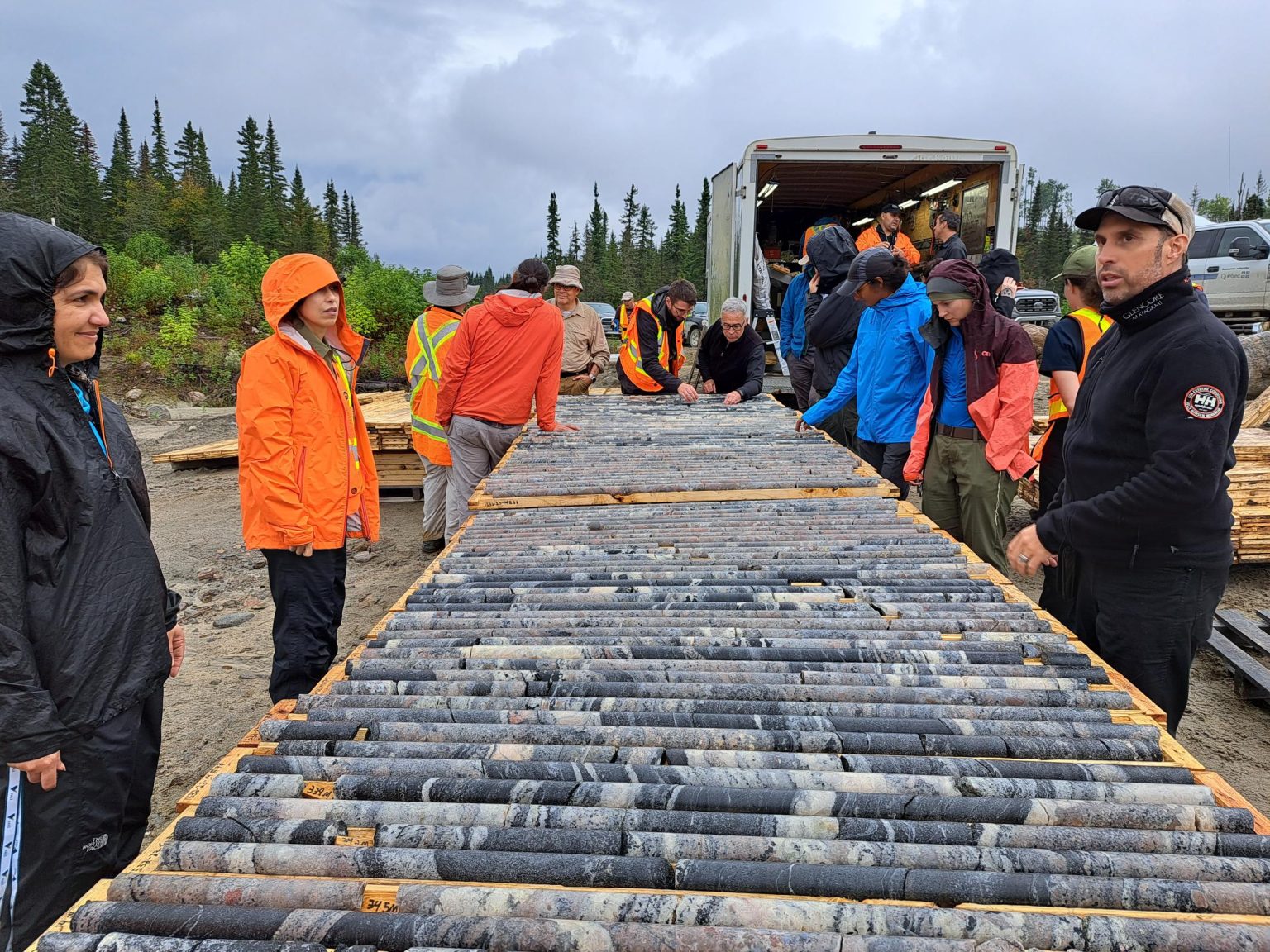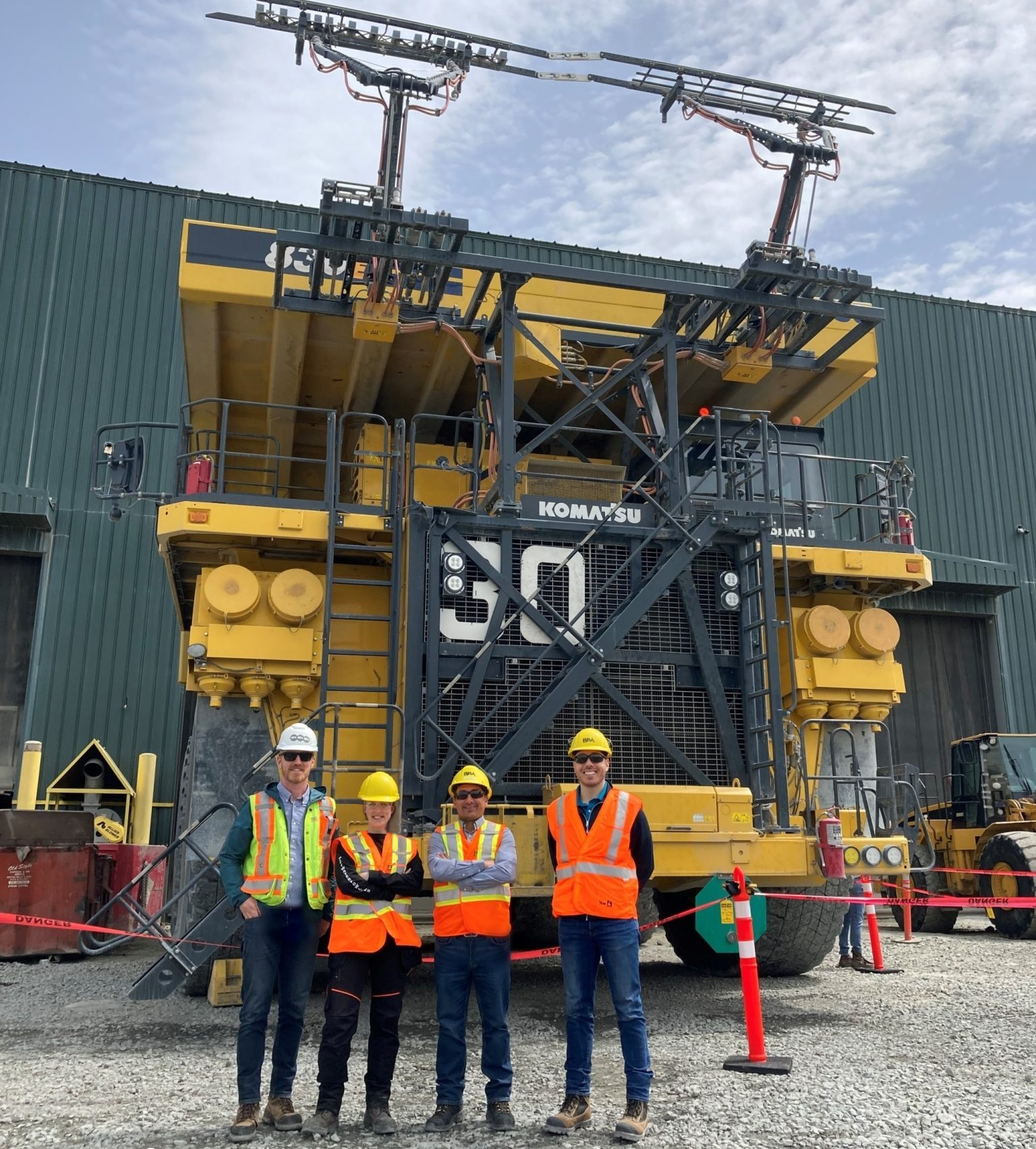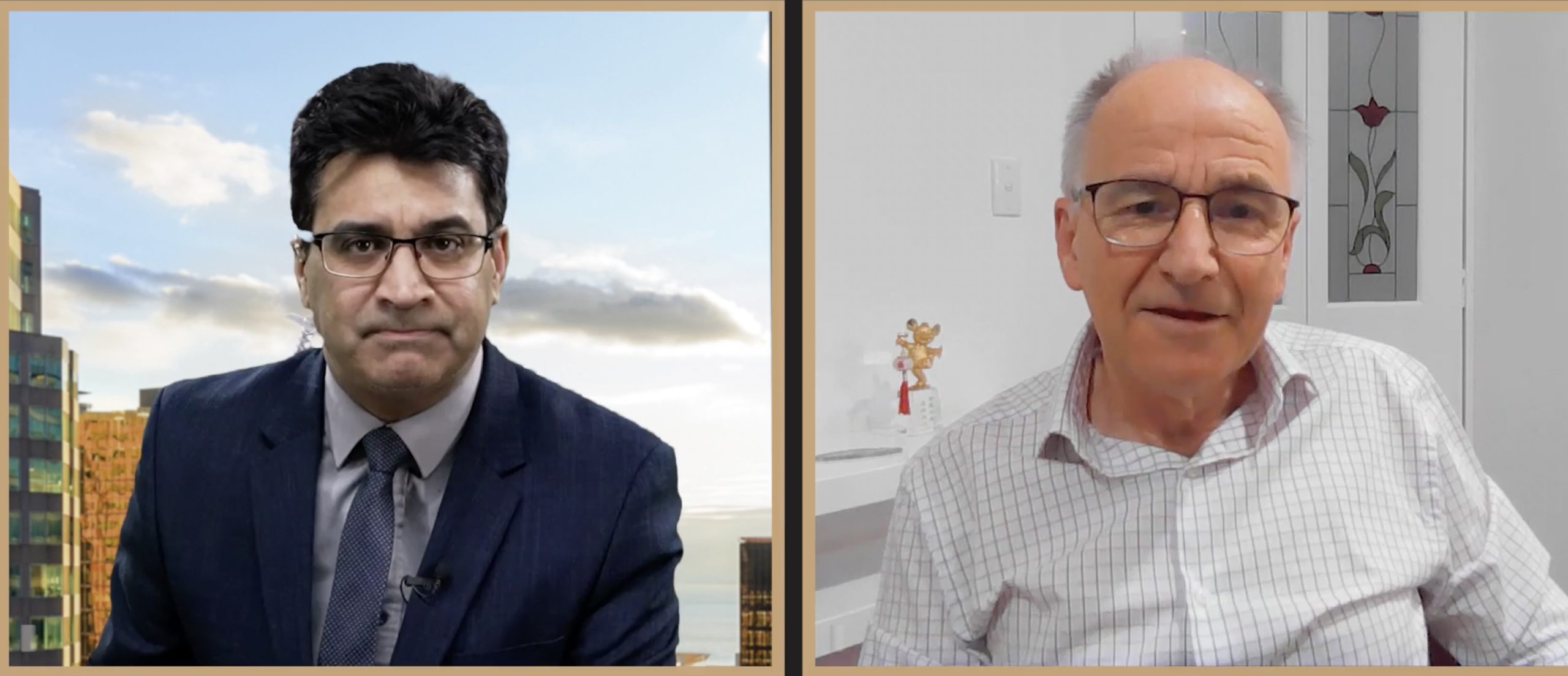Teck looks to unleash culture shift in innovation

The heads-up display technology being developed for Teck’s metallurgical
coal operations. CREDIT: TECK
Far from being a mining industry laggard in innovation over the past decade, Teck has, in many ways, been a leader.
The more than 100-year-old company has been ahead of the curve in implementing a digital strategy starting about 10 years ago; its Courageous Safety Leadership program has improved safety and productivity over the past eight years, and it’s been on the forefront in climate change transparency, planning and even advocacy.

Don Lindsay.
Teck’s efforts on productivity have had tangible success. For example, over the past six years, it’s improved productivity in its coal division by 24%. But now, inspired by a visit to Silicon Valley several months ago, Teck’s president and CEO Don Lindsay is aiming even higher.
Lindsay said that it’s clear from observing what tech leaders there are doing and from assessing the landscape of business in generally, that technology is having an extraordinary impact on productivity across sectors.
“In our industry for the last four or five years, we went through such a severe downturn we were all focused on cost, cost, cost and our productivity gains were in the 3-5% range.
Whereas with the use of some of the new technologies, people talk about 10x and complete step-change gains in productivity,” Lindsay said.
“So what I’m trying to do is unleash a cultural change, inject a whole new energy – similar to what we did in safety about eight years ago.”
The details of the strategy will have to wait until a new executive role is filled – the company was in final interviews for a new senior technology executive the same day Lindsay spoke with CMJ in April – but the technology shift at Teck has been under way for some time.
The idea is to effect a culture shift that empowers Teck employees to share their ideas.
“Innovation is not just technology, innovation is really ideas and we know that everybody in the whole company from the front lines of the business on down has an idea of some sort on how to do the job better, and what it would take whether it’s an operating practice or a piece of equipment or a new technology,” Lindsay said. “Not just Teck, but most of industry is not very good at collecting those ideas and implementing them, and this is something that we want to unleash our energy on and get good at.”
Digital strategy
Teck has had some difficult moments over the past decade.
After the $14-billion acquisition of Fording Canadian Coal in mid-2008, metals and coking coal prices tumbled, forcing Teck to sell assets, suspend its dividend and slash spending.
“I think it’s true throughout the industry that when you’re in such a severe downturn that a lot of things kind of get put on hold while you focus on collecting as much cash as you can in a low (commodity) price environment and reducing debt.
Fortunately, we’re well past that phase,” Lindsay says.
Teck has reduced its debt from US$7.2 billion in 2015 to US$4.8 billion, and it has no payments due this year or the next two years, with only a small amount due in 2021.
“We’ve cleared the decks in advance of building a big project in Chile (Quebrada Blanca phase 2) so we’re not really focused in that direction now, we’re focused on just building the strongest company we can from a productivity and technology and innovation point of view.”
Teck recently reported record revenue and cash flow for 2017, outdoing figures the company reached in 2011, when prices for metallurgical coal and copper were significantly higher.
At the same time, the company is in a good position now because of investments it has made over the past 10 years on digital technology, led by chief information officer and vice-president Teck digital systems, Kalev Ruberg. The One Teck program consolidated the discrete systems that existed at different sites onto one consistent digital platform.
At the same time, Lindsay says he was upgrading Teck’s systems.
“So we find ourselves in a pretty good position relative to others that we don’t need to make sort of big announcements and investments to get to a certain place because we’re already there,” he added.
“That’s one of the contributing factors to during the downturn we were able to take out costs probably a bit faster than most and it’s because key to all that is having the information — the right information in the right place.”
Many of the innovative technologies that Teck is using now rely on that digital connectivity.
For example, the company is employing machine learning by using a Google platform to analyze data streams from haul trucks to predict maintenance issues before they happen.
It’s also using a remotely controlled dozer to access areas in the pit at the Coal Mountain operation that are inaccessible with a conventional dozer.
Ore sorting
At its Highland Valley Copper operation, 50 km southwest of Kamloops, B.C., Teck has partnered with Vancouver-based MineSense Technologies to commercialize ShovelSense technology.
Pilot-scale testing of the technology occurred in 2016, followed by installation of a full-scale unit on one of the operation’s commercial shovels.
The operation is the first worldwide to use ShovelSense in a production setting on this scale.
The technology introduces a new upgrading step at the truck, after the grade control planning step, says Bryan Rairdan, manager of technical services at Highland Valley Copper Operations.
“No deposit is pure ore, there’s of course a mix of ore and waste,” he says. “Historically, we’ve used very blunt tools to differentiate ore and waste and during the actual process of mining.
It’s very easy to get some of the ore and waste misdirected, either because the variability is undefined or the material has moved from its initial position during blasting. The value around sensing at the shovel and making decisions on a shovel by shovel or truck by truckload basis really is about exploiting the inherent variability of the deposit.”
ShovelSense sensors, which are mounted on the shovel, use X-Ray fluorescent sensing technology to indicate grades of various metals.
Rairdan says that the technology allows the company to be more selective and precise, and at Highland Valley, which is a low-grade, high-tonnage and mature operation, that could make a significant difference in operating margins.
“We are currently using it to identify material that is flagged as waste, but it does actually have enough copper in it to be ore,” he explains. “We are redirecting material that would be destined for the waste piles to the mill, based on the readings from the one unit.”
Not only does this allow the company to extract more ore and valuable metal from the deposit, it also has the ability to reduce the amount of waste rock that gets processed, consuming energy needlessly.
Being a new technology, Rairdan says there have been some bugs to work out. Teck worked with MineSense to ensure the technology was as robust as it needed to be, given the “aggressive”
environment on the operation’s shovels, which have a bucket capacity of 80 tonnes each. There was also a lot of work to do to ensure that the machine’s readings were accurate, and to calibrate the readings.
“Any time you measure something you have to have a way to calibrate the measurement. In this case, we didn’t have the right data at the right scale to calibrate the system against, so we had to develop some unique methodologies in order to calibrate the readings that the shovel was giving. And a lot of those we had to develop in concert with MineSense proprietary technology and methodology.”
Another priority was working with the provincial regulators to demonstrate the safety of the technology.
“Ultimately, this is an X-ray system that does generate X-rays out in open space, but of course it’s on an operating shovel bucket so nobody’s in the area,” Rairdan says.
He says that Teck ensured there wasn’t any X-ray exposure and communicated that to both the regulators and its employees.
Teck is currently crunching figures to determine whether there’s an economic justification for rolling out ShovelSense to the rest of the shovels at Highland Valley.
“In the course of March, we’ve diverted over 170 truckloads to the mill that were otherwise destined for the waste piles and each one of those trucks has around 240 tonnes of ore on it.”
If the economic justification is there, ShovelSense could be rolled out to three additional shovels at Highland Valley this year. It could also be used at the company’s other sites.
“We do have a number of people that interact on a regular basis to discuss both this technology and other ore-sorting based technologies. We are investigating its use at our Red Dog operation in Alaska, as well as some of our South American operations.”
Heads-Up Display
Teck is developing another technology for shovels, this time with its steelmaking coal operations in mind. Its heads-up display technology is aimed at displaying and integrating operational data that can currently be overwhelming for shovel operators, said Mohammad Babaei, digital mining innovation lead with Teck.
“We have been bringing all these technologies into the cab of our equipment, including our shovels – we have payloads systems, tracking and fleet management systems, tooth detection system, fragmentation – you name it,” Babaei said. “For one single person as an operator to be able to grasp all those systems with different features and different interfaces is difficult.”
The technology is similar to the heads-up display in some high-end cars – but goes further.
“You have a lot of sensors on the machines that collect 3 to 5 gigabytes of data per machine every day, and from different systems. Bringing that into one location and presenting it in a way that operators can react to it and it can improve their performance – that’s the critical part.”
Babaei says the project’s aim is to increase the efficiency of the shovels, as shovel and truck costs represent a sizeable portion of Teck’s steelmaking coal mining costs. In addition, it will help modernize the shovel operator role with technology that’s commonly associated with gaming – something that will help attract a younger workforce.
“This technology is going to transform the job at the same time as improving efficiency and productivity of the whole operation,” Babaei says.
The company’s digital platform has been critical to the project’s development, as have being able to work with different data types, software development, change management with the operators, and creating a better user experience for them, says Babaei.
“The last part is the science behind all the information – all the data I’m converting to information (or digested data),”
Babaei adds. “So how we can show the diggability of materials to the operators, or can we show the payload, or damage to the machine, all the information that the operator needs – and that’s considered applied science.”
The heads-up display technology is being developed at the Elkview steelmaking coal operation in southeast B.C., with the input of the shovel operators who will be using it. The prototype will be used for the piloting phase this spring, with the first production unit expected before June. Then, the technology may be rolled out for all the shovels at Elkview, and then to other steelmaking coal sites.
Babaei says the technology could potentially save $5 million per year at each site where it’s adopted.
The idea for the project originated with Teck, but the company is now working with a Port Coquitlam, B.C.-based tech company called Finger Food Technologies, to create a prototype of the technology.
Babaei, who completed his PhD in mining engineering with Teck’s support, has already helped the company boost productivity by developing technology for assessing blast quality called a diggability index. “My PhD project has been implemented at three of Teck’s sites and has helped Teck to save millions of dollars in blasting and improving shovel productivity,” Babaei says.
Babaei’s research included a deep examination of the performance of the company’s shovels.
“We are operationalizing some of the science that I did through my research and some of those are really novel – for example, building a training platform for shovel operators that can help them to find the optimal digging path and to help them fill the truck in optimum time with high efficiency.”
Partnerships
It may be surprising that Teck is working with smaller vendors on technology such as the heads-up display and ShovelSense.
But Lindsay says the company has found such partners effective and easy to work with.
“While we do have important, very strong relationships with some of the big names, some of the same names you’ve heard other companies talk about, we find that actually the smaller vendors, small shops, very entrepreneurial with key technology for this challenge or that challenge, seem to be a bit more practical, faster to implement with fewer meetings,” he said.
“We’ve also made some seed investments in various things that could amount to step-change kind of gains elsewhere, but I think philosophically, smaller rather than bigger seems to be more effective.”
On the other end of the scale, Teck is working with Caterpillar to bring six autonomous haul trucks to its Highland Valley Copper operation by the end of the year. It will be the first use of an autonomous fleet at a deep open-pit mine. Teck pegs the potential savings at $20 million annually at the operation, and $100 million across the company.





Comments